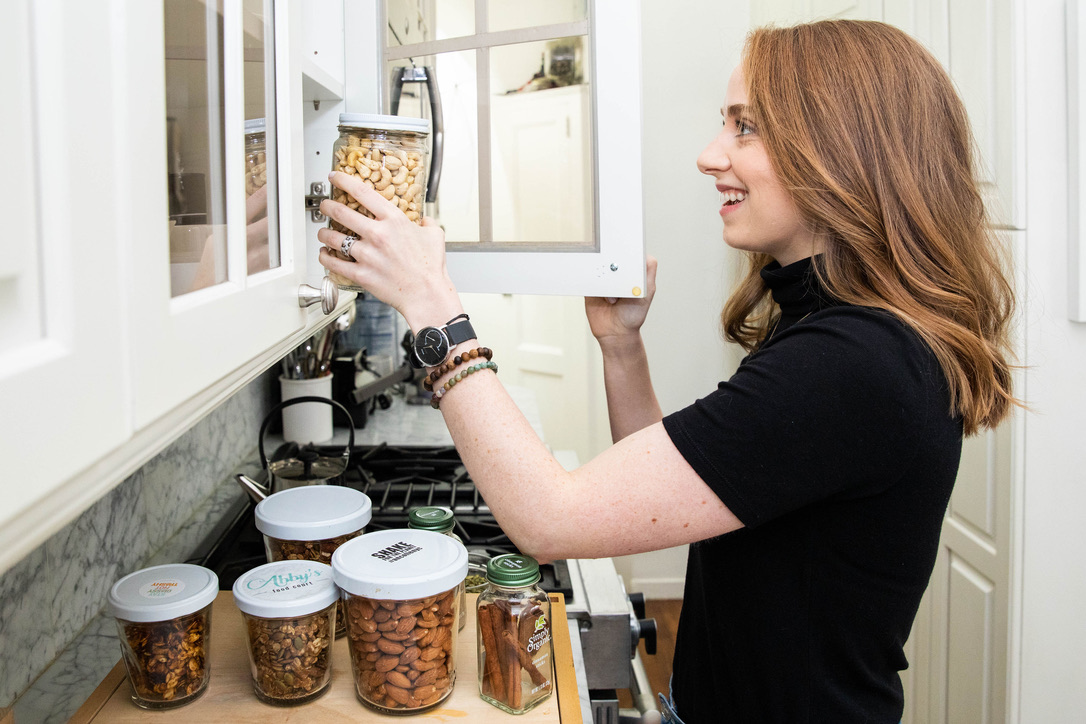To can (can) or not to can (can)...⭐
Last week, I walked you through my process of choosing between organic produce in plastic and conventional produce that comes loose. It pains me to purchase anything in plastic, but I do it. I can’t find certain items, i.e., supplements, and some sources of protein and produce, loose or plastic free. In those cases, I take a deep breath, (usually make a crying face to my husband, Rob), make my purchase, and use and dispose of the unavoidable plastic in the most responsible way possible.
Last week, I told you that I’d cover soft plastics this week. I started researching the different types of plastic, where they're found, the chemicals in them, and what to do with them. I had all my books open, took copious notes, and ended up with the longest newsletter filled with an overwhelming amount of information. That being said, I need another week or so to pair it down and make it useful for you. So, bear with me…I will answer your burning questions about soft plastics soon!
In the meantime, I won't gyp you of your weekly sustainability tip. To celebrate World Pulses Day today, I'm giving you another reason to #shopnaked for DRIED BEANS! (Pulses include chickpeas, lentils, dried peas, and beans).
Weekly Sustainability Tip: To reduce exposure to toxins, limit your use of canned goods by cooking dried beans that you bought plastic and package free from the bulk section!
Okay, I know this is a HUGE ask. If you’re rolling your eyes and thinking “Is Abby REALLY asking me to give up canned beans?,” I don’t blame you. This is a tough one for me too and I admit that there are canned beans in my pantry. HOWEVER, based on my research, my goal is to reduce how often I use canned goods. Here’s why:
Did you know that many canned goods are lined with an epoxy resin that contains Bisphenol A (BPA)? BPA is an endocrine disrupting chemical, which means it messes with our hormones (estrogen in particular), and, interestingly, we’re MOST exposed to it through our diet. An analysis of fresh, frozen and canned foods found that BPA was present in 73% of canned food and only 7% of non-canned samples.
There’s a strong body of scientific evidence associating BPA with early puberty, obesity, infertility, insulin inhibition, hyperactivity and learning disabilities, and possibly an increased risk of breast and prostate cancer, heart disease, and type II diabetes.
Because BPA has received the negative attention it deserves, manufacturers have been phasing it out of their products.
But (you probably anticipated there'd be a "but"), they’ve replaced BPA with other potentially toxic chemicals.
And, there are no uniform or enforceable standards for making the "BPA-free" claim, meaning there's no guarantee that the claim "BPA free" on a product is valid.
So, if you want to reduce your exposure to endocrine disruptors (I certainly do!), it's best to reduce consumption of canned goods!
Notice that I said REDUCE, not ELIMINATE. Of course, I want to eliminate my exposure entirely, but that isn’t realistic. Setting unrealistic goals sets us up for failure. And, my ultimate goal is for all of us to SUCCEED!
Therefore, the goal is to REDUCE exposure by finding suitable #lowwaste or #zerowaste alternatives wherever we can without great sacrifice to our lives. AM I RIGHT?
✨In the case of canned beans, there’s a GREAT alternative: buy dried beans in bulk in your own containers and cook them at home! ✨You can find my Guide to Buying in Bulk here and below are cooking instructions.
Yes, canned beans SEEM much more convenient, but cooking them is like cooking pasta! And, I know you can cook pasta!
How to cook dried beans:
Choose the beans you're going cook and discard any bean that’s broken and any stone or other debris.
Rinse the beans in a sieve under cold running water and then soak them overnight:
To soak the beans, transfer them into a heavy bottomed stainless steel, non-toxic pot. Cover with warm water (this helps break down indigestible starches). Add 2 tbsp lemon juice or apple cider vinegar for every 1 cup of dried beans. Let sit in the acidic water overnight (8-12 hours).
After you’ve soaked the beans, drain, rinse and return them to a clean pot.
Top tip: catch the drained water, which is considered “grey water,” and dispose of it outside or use it to water plants. My yoga teacher, Morgan, (Hi Morgan!) reminded me of this great tip!
Now it’s time to cook the beans! 🎉 Cover them with fresh water (about 2 inches above the top of the beans). Option to add a piece of kombu (~3 inches long) to the pot*. Cover and bring water to a boil. Remove the foam that rises to the top (this foam can cause digestive issues) and reduce the heat. Simmer until the beans are tender, but not mushy.
See the chart below for approximate cooking times!
Once cooked, remove from the heat and add salt (don’t add salt until you’ve cooked the beans because the salt interferes with cooking). Let the beans sit in the salty water for 15 minutes to 2 hours. Drain and rinse.
Store in an airtight glass container in the fridge for a week, or in the freezer for a few months!
| Dried Legume (1 cup) | Soaking Time | Cooking Time | Yield |
| Adzuki Beans | Overnight, if possible** | 30 minutes | 2.5 cups |
| Black Beans | Overnight | 45-60 minutes | 3 cups |
| Black-Eyed Peas | Overnight | 60 minutes | 3 cups |
| Fava Beans | Overnight | 45-60 minutes | 3 cups |
| Kidney Beans | Overnight | 60 minutes | 3 cups |
| Lentils | Overnight, if possible** | 10-20 minutes | 2- 2.5 cups |
| Lima Beans | Overnight | 60-90 minutes | 3 cups |
| Mung Beans | Overnight, if possible** | 60 minutes | 2 cups |
| Navy Beans | Overnight | 45-60 minutes | 3 cups |
| Pinto Beans | Overnight | 45-60 minutes | 3 cups |
| Split Peas | Overnight, if possible** | 10-25 minutes | 2 cups |
| Whole Peas | Overnight | 30-45 minutes | 2 cups |
*What is kombu? Kombu is a mineral rich seaweed. Adding it when cooking beans helps reduce the amount of phytic acid present in the beans. Phytic acid prevents the absorption of some essential nutrients. Soaking beans and using kombu reduce the presence of phytic acid and aids in the digestibility of the beans.
**You don’t necessarily have to soak adzuki beans, lentils, mung beans or spilt peas prior to cooking. However, to reduce phytic acid and cooking time and to aid in digestibility, I recommend soaking them if you remember and have the time.
You might be saying to yourself, “All this sounds wonderful, but if I do buy canned goods, what should I look out for?” I’VE GOT YOU! Follow these rules to help reduce your exposure to BPA from canned goods:
ONLY purchase cans that specifically say, “BPA free lining.” (In this case, I follow the philosophy of the BPA-devil we know, is better than the devil we don’t).
My favorite brands for canned goods: Eden Organics and Whole Foods brand
FYI: The coconut milk I use for my 2 ingredient homemade coconut milk creamer is Whole Foods brand full fat coconut milk!
Rinse canned goods with water before consuming. This might reduce the level of BPA in the food.
Oily and acidic foods can increase leaching of BPA into food, so avoid purchasing those foods, i.e., tomatoes, tomato sauces, alcoholic beverages, etc., in cans. Buy those fresh or in glass containers!
And, I can’t miss an opportunity to talk about recycling! The good thing about canned foods is that aluminum cans are 100% recyclable and have an infinite lifespan, meaning you can recycle them over and over and over again. When you do buy canned goods, rinse the can before recycling!
The more information I know about the chemicals and toxins lurking in our foods, the more motivated I am to #SHOPNAKED by purchasing food that’s plastic and package free as often as possible. Do you feel this way too?
I LOVE seeing you #shopnaked and #snacknaked so keep the posts coming. Tag me @abbysfoodcourt and use those hashtags for a chance to be featured on my Instagram account!
Health + Happiness,





